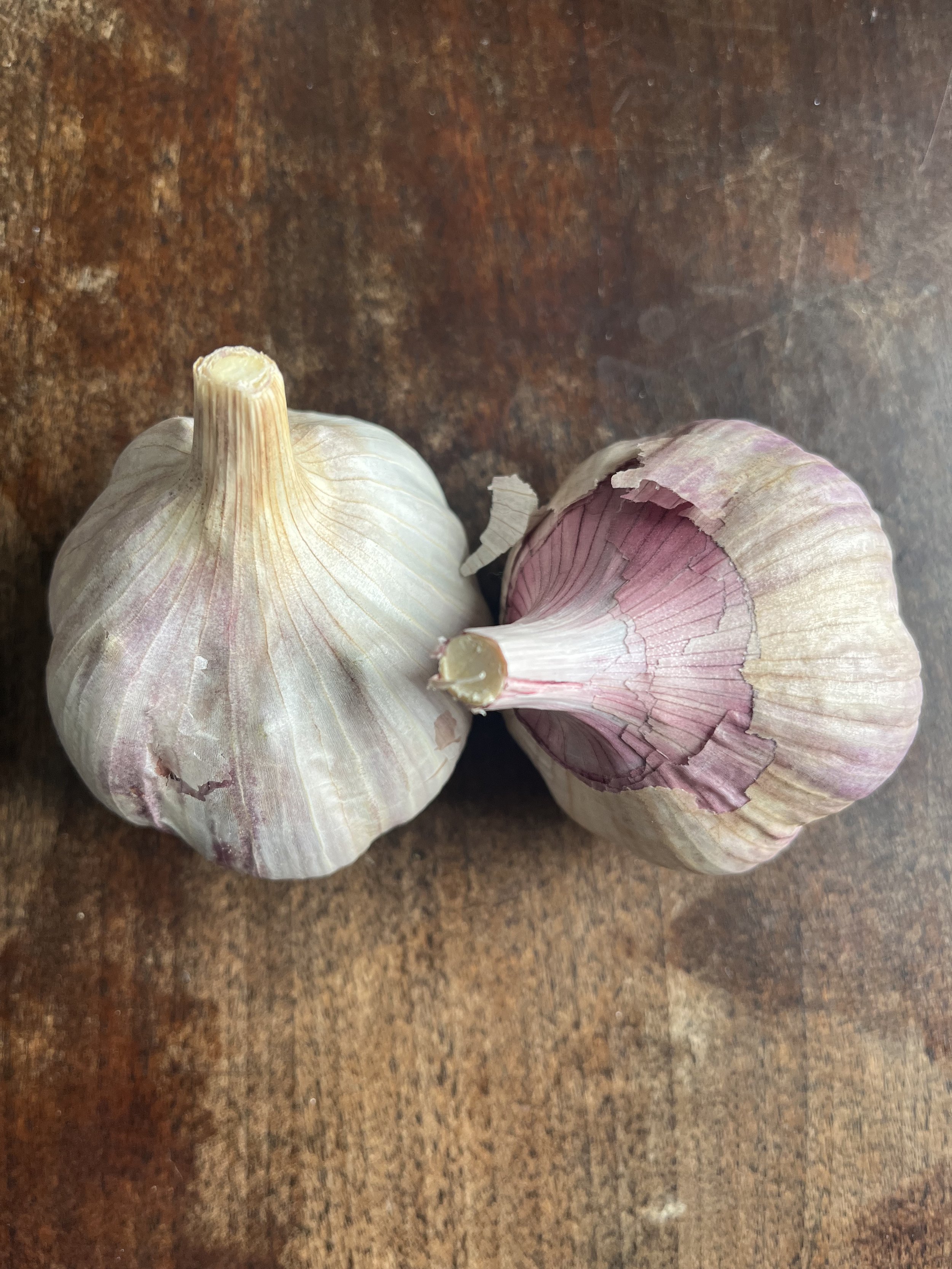Nature Cure—Garden Edition!
A couple of months ago I was passing through Olympia and stopped at their co-op for a snack. They had a barrel of seed garlic for sale near the entrance and I picked up a couple bulbs on a whim. They were large and beautiful with purple papery skins. I have never grown garlic but I have contemplated it before and this was the invitation I needed. It’s supposed to be easy—you plant it and leave it alone until spring.
I arrived at home and the garlic bulbs sat on my counter until yesterday when I realized that if I was going to plant them it needed to happen soon. I have a few gardening books but they didn’t have much to say about garlic so I browsed the internet and found that I might be too late or I might be just on time. Some sources recommended soaking the garlic in baking soda water so I split the bulb into cloves, filled a mason jar and plopped them in for the night. This morning I headed out to a raised bed in the back yard and pulled up a tomato plant that succumbed to the frost a few weeks ago. The frost was a surprise and a dozen or so green tomatoes were still on the withered vine or in the dirt below. I scooped them up and wondered whether any “volunteer” plants might pop next spring. I also pulled up a couple of kale plants, first harvesting the young central leaves. I left a few kale plants at edge of the raised bed but pulled off the large leaves the cabbage worms had gotten to.
In the newly cleared space, I dug three trenches a few inches deep, and I used my bare hands because I like to feel the dirt. I pressed the cloves into soil about 4 inches apart then refilled the trenches with soil. I gathered the tomato plant, the kale leaf skeletons, and a few morning glory vines I pulled in the process and brought them to the compost. The garden bed now looked tidy and it was satisfying to see, to know I had worked with my hands, if only for a quarter of an hour.
I’d like to say I was fully present during this experience, that I really connected to the soil and the garlic bulbs, the kale leaves. But the truth is I was anxious. It felt good to be out in cool November air and feel the dirt under my nails, the curly edges of the kale leaves, but really I was going through the motions. Nature didn’t take my anxiety away. But it did give me some momentum. While I was planting the garlic, my partner got up and cut our dahlia down close to the soil. They pulled up some morning glory and moved some pots to the covered patio.
I thought about our peony bush and decided to try pruning it. The first spring we lived here it was full of enormous pale pink blooms but the next two years it seemed to flower less and less, perhaps because it wasn’t getting the care it needed. The internet once again offered mixed advice, some sources saying you don’t need to prune it, others saying it should be cut to the ground in late fall. I worried about it for a few minutes. What if I cut it down and it never grew back? And then I thought about the gardening “research” I had been doing and the mixed results I had been getting and decided “F*ck it, I’m going to cut it down!” I had the realization that there is probably so much mixed gardening advice out there because most plants are highly resilient and adaptable. They’re hard to mess up! You can plant something too late, or too close together, or not plant something at all and stuff still comes out of the ground. And you can prune something or not prune something and there’s a good chance it will still grow. Because plants are bad asses. I want to channel more plant energy in my life. Sometimes we experience setbacks in our health because the conditions aren’t right. And while these setbacks are frustrating they are temporary. Our bodies are resilient just like plants. And we can work on the conditions to help our plants and our bodies thrive, but they are going to keep growing and healing through the setbacks too.


